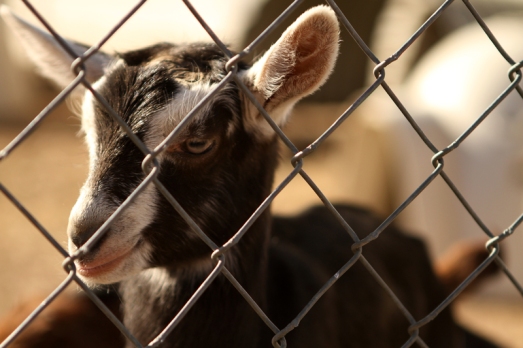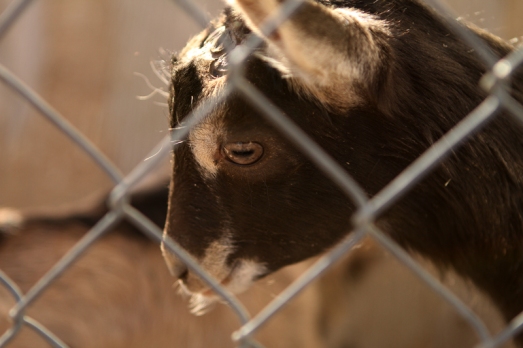Here are some of my favorite photos from the Alpine & Nigerian Dwarf shows. For the full album of 47 photos click here.
Tag Archives: Harmody Alpines
2013 ADGA National Show – Showmanship
This summer, Trevor, Peter & I had the pleasure of attending the 2013 ADGA National Show in Minnesota! Here are some of my favorite photos from Showmanship. For the full album of 101 photos click here.
All photos are on the Canon 7D with f/2.8 70-200 mm lens
2012 ADGA National Show
Hello Friends and Followers!
The moment we’ve been waiting for has finally come and gone! The 2012 ADGA National Show in Loveland, CO was a great success. My crew and I worked around the clock in order to fully capture the event. We met hundreds of wonderful people and thousands of delightful goats. All in all, I’d say it went really well!
There were moments of stress and drama, like a monumental thunder and lightning storm that flooded three tents of goat pens and temporarily displaced hundreds of goats just hours after vet check. But the goat community banded together to help save both friend and foe from the downpour.
There were also countless moments of triumph. Redwood Hill, a farm we’ve followed from the beginning, had three big wins and dozens of good placings. Redwood Herd Manager Trinity Smith won Overall Grand Champion Nubian with her mother Karen Smith’s Nubian doe of Wingwood Farm. Redwood also won Overall Grand Champion Alpine and Overall Grand Champion Saanen. When it came time to sell one of their Alpine does in the Colorama Sale, they raised over $3,700. Sir Echo’s Sandy Van Echo (a Kickstarter backer) won Overall Reserve Champion Oberhasli. Congratulations to everyone at the 2012 ADGA National Show! It will go down in the books as one of the largest shows in recent history. The competition was steep but everyone did a great job preparing their goats for the ring.
Goat Show Doc had anywhere between 3 and 7 cameras running at any given time, and even though we now have hundreds of hours of footage to sort through, I am extremely happy with what we got. We also had a very successful booth (blog post to come) that included information on local tourist activities and a “yearbook” with still photos from the shoot. We had a coin race (see results at http://goatshowdoc.com/2012/07/15/coin-race-results/) and sold T-shirts to raise money. We still have a lot of extra T-shirts ($20 plus shipping). If you’re interested please contact me! Finally we had a “Name the Documentary” contest. Results are available for voting at http://goatshowdoc.com/2012/07/014/name-the-documentary/. My personal favorites are “Goat People,” “Hooves” and “No Goats No Glory” … but we won’t decide until the public has voiced their opinion and until the movie is complete!
Thank you to everyone who made our National Goat Show experience so great! The hours were long and the shoot was physically demanding on all of us, but I wouldn’t change a thing! It was sad to say goodbye to so many old friends and so many new ones, but I know I will see you all in 2013 at the special advanced screening of the yet-to-be-titled Goat Show Doc.
A huge thank you to the following awesome people who gave us extensive interviews and access at the show:
Greg, Vicki, Hannah, Joseph, Abbi and Emily Larson (CO) – http://www.harmodyalpines.com/
Jennifer & Scott Bice (CA) – http://www.redwoodhill.com/
Trinity & Karen Smith (CA) – http://wingwoodfarm.com/
Katie Jack (CA)
Andrew Malmanis (CA)
Fauna Smith (New Zealand)
Joan S. Bowen (CO)
Chuck Pedersen (CO)
Karen Smith (TN)
Phil & Nan Hassey (CO)
Tawney Bleak (CO)
Sandy Van Echo (AZ) – http://www.sirechofarm.com/
Anne Jones (TX) – http://www.lattedadairy.com/
Ellen Dorsey (OK) – http://www.dillsalittlegoatfarm.com/
Matthew Dziadkowiec (TN)
Phil Cassette (ME) – http://chateaubriantfarm.net/
Paul Plummer (IA) – http://vetmed.iastate.edu/users/pplummer
Jon Welker (CO)
Libby George (CO) – http://www.gggblackforestoberhasli.com/
Barbara Rissler (OK)
Abby Powell (CO)
If you like what we’re doing, please consider donating – www.indiegogo.com We’re still over $20,000 away from what we need to finish the doc! Thank you for your support!
Darling Alpines!
Another stop on Mom and my baby goat tour of Northern Colorado was Vicki Larson of Harmody Alpines in Windsor, CO. Vicki, Greg, Amanda, Kenton, Hannah, Joseph, Abbi and Emily (phew!) started out with a small herd of Alpines fifteen years ago, and now they’ve branched out into Lamanchas, Oberhaslis and Toggenburgs. Last year the Larsons did quite well at Nationals and are gearing up for another good year. Here are some pictures of their adorable babies, as well as some Alpine facts!
Click on each picture to see a larger version.
The Alpine breed originated in the French Alps. They were first imported to America in 1922 by Charles P. Delangle.
Alpines are the only breed of upright-eared dairy goat that can come in all different colors and patterns
Before a recent overhaul by the Nigerian Dwarf breed, Alpines were once the 2nd most popular breed in ADGA (1st is Nubians).
Common Alpine colors include: Cou Blanc (coo blanc) – literally “white neck” white front quarters and black hindquarters with black or gray markings on the head. Cou Clair (coo clair) – literally “clear neck” front quarters are tan, saffron, off-white, or shading to gray with black hindquarters. Cou Noir (coo nwah) – literally “black neck” black front quarters and white hindquarters. Sundgau (sundgow) – black with white markings such as underbody, facial stripes, etc. Pied – spotted or mottled. Chamoisee (shamwahzay) – brown or bay characteristic markings are black face, dorsal stripe, feet and legs, and sometimes a martingale running over the withers and down to the chest. Spelling for male is chamoise. Two-tone Chamoisee – light front quarters with brown or gray hindquarters. This is not a cou blanc or cou clair as these terms are reserved for animals with black hindquarters. Broken Chamoisee – a solid chamoisee broken with another color by being banded or splashed, etc.
A “Rock Alpine” is a Purebred French Alpine crossbred with another Swiss import. They are not registered under ADGA, but the Rock Alpines of the 1920s had great genetics and were absorbed into the category of “American Alpine,” which includes goats that are not 100% French Alpine.
A “British Alpine” is a goat that appears to be a black and white Toggenburg.
Alpine milk is great for cheese because of their good butterfat and protein content
Alpines can have Toggenburg-like facial stripes, but cannot be Toggenburg colored. Likewise, they cannot be solid white like Saanens.
Alpines are known for being curious, friendly and hardy
You can find more information about Alpines at the Alpines International Breed Club website: www.alpinesinternationalclub.com/
Thank you to the Larson family for letting us visit your goats! Good luck at Nationals!




















